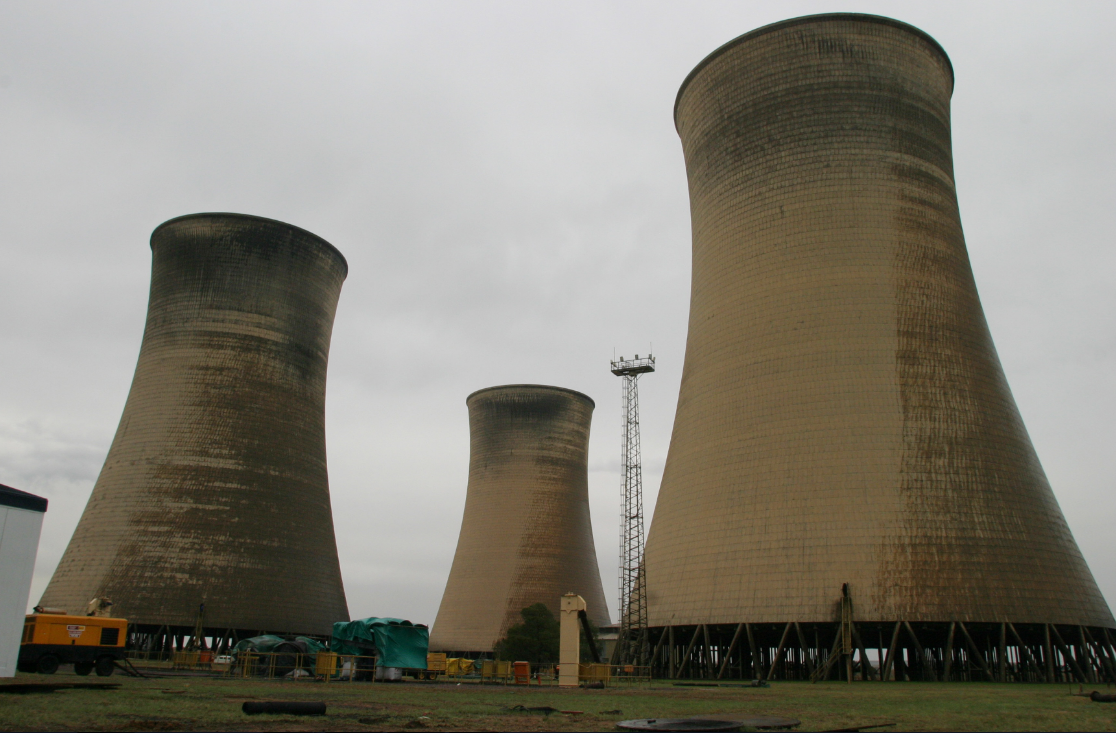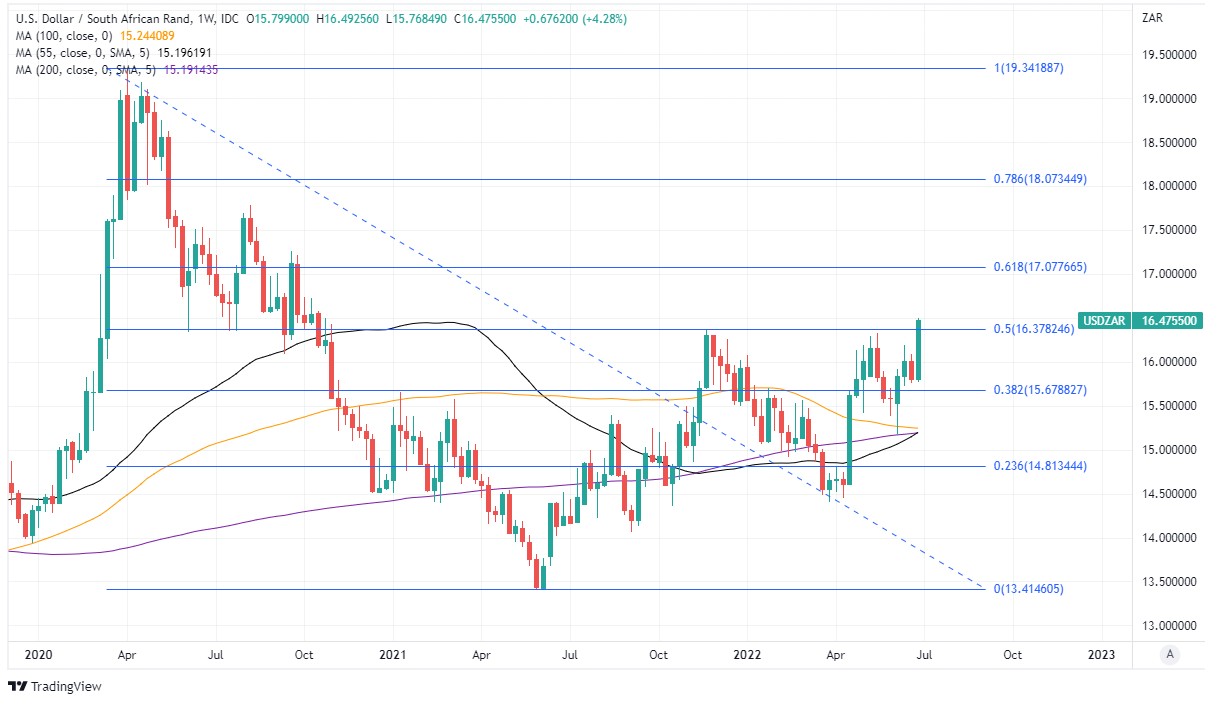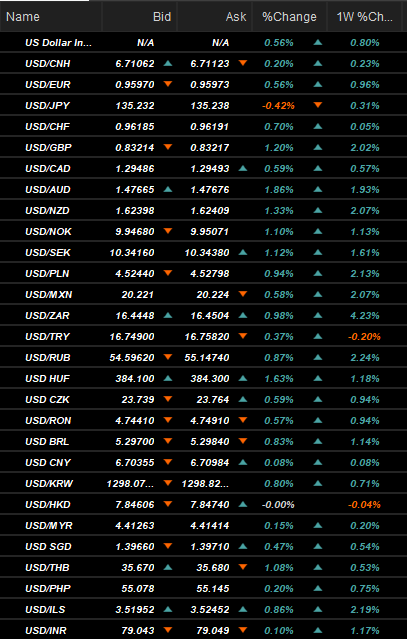South African Rand Testing Key Support on Charts as Perfect Storm Breaks
- Written by: James Skinner

Image © Eskom SOC
The South African Rand was eroding a major level of support on the charts ahead of the weekend after broad and widespread strength in the U.S. Dollar conspired with market concerns about local factors to drive the steepest rally in USD/ZAR since the Renminbi sell-off seen during late April.
South Africa’s Rand traded close to 16.50 against the Dollar on Friday, marking the second time it had fallen beneath an important level of support on the charts as USD/ZAR rallied above 16.37 to build further on its weekly advance.
Rand losses came as strike action at stage energy provider Eskom continued, prompting some of its ailing facilities to fail and leading the firm to reimpose Stage 6 loadshedding across the country, which could have implications for the domestic economy if it continues for an extended period.
“The outcome for 2022 GDP will depend on how long the country experiences severe outages,” says Annabel Bishop, chief economist at Investec.
“A couple of days of stage six load shedding in one year will neither derail economic growth, nor credit ratings’, outlooks for SA, but persistent severe loadshedding will, while SA enters a worsening global economic environment in H2.22 as well,” Bishop said on Friday.
 Above: USD/ZAR at weekly intervals with selected moving-averages and Fibonacci retracements of 2020 fall indicating medium-term areas of technical resistance for the Dollar and support for the Rand. Click image for closer inspection.
Above: USD/ZAR at weekly intervals with selected moving-averages and Fibonacci retracements of 2020 fall indicating medium-term areas of technical resistance for the Dollar and support for the Rand. Click image for closer inspection.
Eskom said previously that “high levels of staff absenteeism and intimidation of working employees in some of the power stations” by those out on strike had made routine maintenance and other operations all but impossible, hence the rolling six hour long power cuts across South Africa.
The strike follows unsuccessful negotiations with a unionised workforce and is said to be illegal due to the provision of electricity being a “designated essential service,” although it was unclear on Friday exactly how long it would go on for.
“After the strong Q1.22 GDP outcome, the second quarter of this year is likely to record a contraction on the back of the flood damage in the KZN province, and the ramp up in electricity loadshedding, along with the weakening in global demand and low confidence,” Investec’s Bishop has warned.
“An economy cannot function to its full potential with insufficient electricity supply, and the parlous state the recent strike action has also had on electricity production, along with the intentional sabotage of electricity power stations and infrastructure has damaged H1.22 GDP,” she added.
The Rand was comfortably the worst performing currency within the G20 grouping for the week by Friday with USD/ZAR having risen more than four percent during the period, although many others also sustained heavy losses against a broadly and significantly stronger Dollar.
Above: Interbank reference rates and performances for selected U.S. Dollar exchange rates. Source: Netdania Netstation.
“I would still like to see more of a pullback towards 16,20 ahead of the weekend, but am not going to rule out another look at 16,4700 and obviously through there, 16,60/65,” says Walter de Wett, a fixed income and currency strategist at Nedbank, in reference to USD/ZAR.
Other big fallers included the Pound, New Zealand Dollar, Israeli Shekel, Polish Zloty, Mexican Peso and Russian Rouble, which each fell more than two percent relative to the U.S. Dollar, while the Turkish Lira, Hong Kong Dollar and Malaysian Ringgit were the top performing currencies.
All of this price action came alongside steep and ongoing declines in government bond yields which many attribute to market concerns about the trajectory of central bank interest rate policies amid the economic shock coming from commodity prices.
“Our target range of 15.50-16.50 for USDZAR (set on 18 May) still looks appropriate,” says Nimrod Mevorach, a strategist a Credit Suisse.
“The improvement on the fiscal front in recent quarters has been encouraging. Among other things it led S&P to raise South Africa’s credit rating outlook to positive (from neutral) in late May. In the absence of a large drop in metal prices, investors are unlikely to be concerned about the fiscal outlook to the same extent that they were before the pandemic,” Mevorach and colleagues also said.





